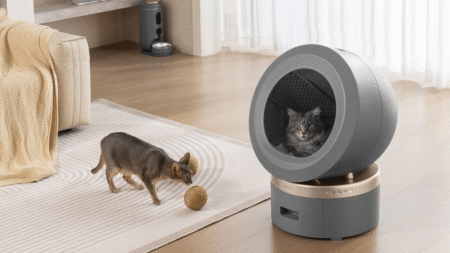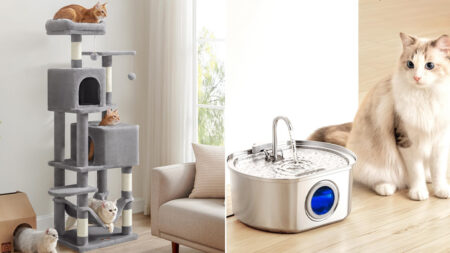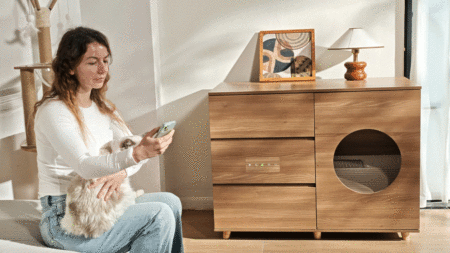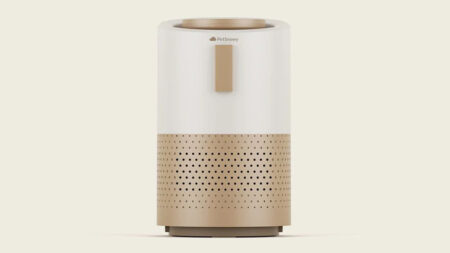As much as we love our feline friends, it’s no secret that cats can be prone to gaining weight and becoming obese. Obesity in cats can lead to a range of health issues, including diabetes, arthritis, and heart disease. As a responsible pet owner, it’s important to help prevent obesity in our cats. One tool that can be particularly helpful in this regard is an automatic pet feeder.
In this article, we explore the causes and symptoms of obesity and explain the benefits of an automatic pet feeder that can combat feline obesity. We will also offer advice on selecting the best automatic cat feeder for your specific requirements. Let’s dive right in!
Causes of Pet Obesity
There are several reasons why cat obesity has become a concerning issue in recent years. One of the primary causes is a lack of physical activity. As cats have transitioned from being outdoors to staying indoors more often, lack of exercise, unhealthy eating habits, and overfeeding (your pampered pal) are major culprits leading to weight gain in these animals.
Another cause of feline obesity is their genetic makeup. Some breeds, such as the Maine Coon or Persian cats, are more prone to gaining weight than others due to their genetics. This can make it even more challenging for owners to maintain appropriate pet nutrition and portion control leading to an overweight cat.
Consequences of Pet Obesity
Cats that are extremely overweight often have a shorter life expectancy, putting them at a higher risk of developing adverse health conditions including diabetes, which is a common health consequence of pet obesity.
Diabetes in cats is a condition in which the body cannot produce or use insulin, a hormone that regulates blood sugar levels. Feline diabetes can be caused by pancreatic disease, genetics, or obesity. Common signs and symptoms of this disease in cats include:
- Increased thirst: Elevated blood sugar levels can lead to increased thirst
- Weight loss: Despite having a good appetite, some diabetic cats can lose weight due to the body’s ability to use glucose properly
- Decreased appetite: Some cats with diabetes may lose their appetite or become finicky around their food
- Bladder infections: High sugar levels in a diabetic cat’s system can lead to increased urination, which increases the likelihood of bladder infections
- Increased fatigue: Uncontrolled diabetes can lead to fatigue and weakness as the body cannot use glucose properly.
Cats with diabetes can be managed; however, it can lead to serious concerns without proper care, with some going into remission.
What is an Automatic Pet Feeder?
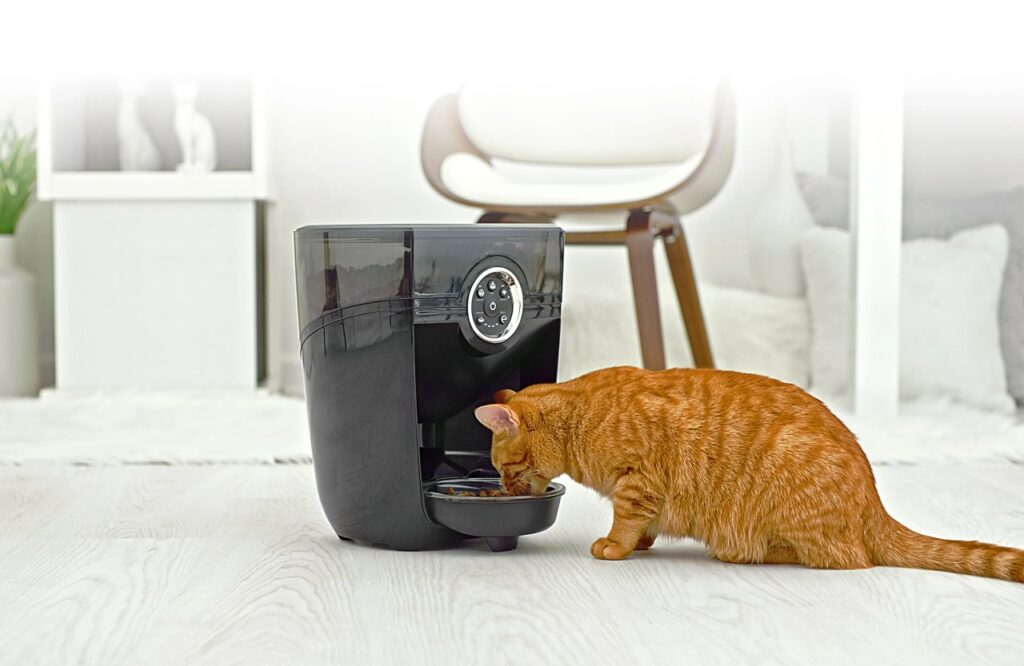
An automatic pet feeder, as the name suggests, is a pet feeding device that is meant to dispense food to cats and dogs at predetermined intervals or schedules. Being an automatic dispenser, such a device runs off the battery and can function without human intervention (except for filling the device with food and scheduling its feed dispensing time and quantity).
To that accord, an automatic pet feeder comprises a food container, a dispenser, a programmable timer, and board digital controls. Some feeders even work with a dedicated mobile app to provide remote control. Thus, the biggest advantage of these automatic pet feeders is the convenience they provide to pet owners who can ensure their pets are fed on time, even when they are not at home or are unable to feed their pets manually.
Automatic pet feeders can be beneficial for pet owners who have busy schedules, irregular work hours, or are frequently away from home, as they help ensure that their pets are fed regularly, on time, and in the pre-scheduled quantity.
How Can Automatic Pet Feeders Help Combat Feline Obesity?
Fortunately, automatic pet feeders have emerged as a valuable device that can help combat cat obesity by regulating meal portions and timing. Their advanced features like feeding records that track your animal’s eating habits and ensure they get enough food at each meal helps maintain cats’ overall health.
These feeders offer an excellent solution for busy pet parents who want to keep their cats from becoming overweight without compromising the quality of time spent with them daily.
Portion Control: Regulate Your Cat’s Diet
Portion control is essential in maintaining a healthy weight for your cat, as overfeeding and lack of exercise can lead to obesity. Automatic pet feeders are becoming an increasingly popular tool for controlling the amount of food pets consume.
One of the main advantages of automatic pet feeders is that they help prevent overfeeding. Tracking how much food your cat has eaten throughout the day can be challenging with traditional feeding methods. This can result in overfeeding, leading to obesity, diabetes, and other health conditions.
Automatic pet feeders provide precise portion control by dispensing the exact amount of food at specified intervals throughout the day. This helps ensure that your cat eats only what they need – no more, no less.
Consistency: Establish a Feeding Routine
Consistency is crucial when establishing a cat’s feeding routine. Pet owners who struggle with overfeeding or irregular meal times may find that automatic pet feeders can help set up and maintain consistency in their pets’ feeding schedules. By providing pre-measured portions of food at the same time every day, automatic feeders can prevent under or overfeeding while encouraging healthy eating habits and weight management.
Moreover, automatic pet feeders offer numerous benefits beyond creating a consistent feeding schedule. They reduce the risk of human error by removing the need for manual portioning and eliminate any chance of your furry friend being accidentally skipped meals. Also, they are ideal for pet owners with busy schedules who may only sometimes be around to regulate meal times. With an easy-to-use dispenser system that ensures the timely distribution of appropriate servings paired with a programmed scheduler–an automatic pet feeder would certainly make life easier for all parties involved!
Physical Activity: Keeping Your Cat Active
Some automatic feeders have features such as rotating trays or puzzles that require your cat to work for its food. These interactive feeders are designed to engage your cat’s mind and body, providing mental stimulation and physical exercise.
These feeder models incorporate motion sensors or timers that dispense food only after the physical activity has been detected, encouraging cats to be more active during playtime. However, choosing an automatic feeder suitable for your cat’s needs is essential based on age, weight, dietary restrictions, and preferences.
Types of Automatic Pet Feeders
There are several types of automatic pet feeders available in the market that cater to different dietary and lifestyle requirements.
- Gravity feeders: Designed to release dry food on their own as the level falls below a certain point, these make it ideal for cats that graze throughout the day.
- Timed feeders: These can be programmed to dispense meals at specific times, ensuring precise portion control and helping combat feline obesity caused by overeating.
- Advanced Feeders: This type of feeder is smart, or Wi-Fi enabled and comes with advanced features like remote programming via a smartphone app, feeding alerts, voice-recording function, and even treat dispensing systems.
Choosing An Automatic Pet Feeder
To ensure your feline friend’s nutritional needs are met with a feeder; choosing the right automatic pet feeder requires careful consideration of various factors. These include
- Necessary meal size for weight management versus maintenance
- Required number of meals per day (which can range from 1-8 depending on activity level and health status)
- Size of your cat, their food preferences, feeding schedule, and portion control needs
- Features like easy-to-clean bowls or mechanisms that prevent food from getting stuck
- Choice between less expensive dry kibble or more expensive and less convenient wet sachets
- Feeder’s holding capacity, brand reputation, internet satisfaction, warranty period, and customer service responsiveness during troubleshooting are essential considerations.
By considering these factors, you can select a product tailored to your cat’s specific health requirements.
On The Whole
Automatic pet feeders have gained immense popularity among pet owners as they can effectively regulate their pet’s diet and promote a healthier lifestyle at home. These advanced devices offer the convenience of providing accurate measurements of food at regular intervals throughout the day, even when the pet owner is away from home.
By doing so, these automatic feeders can help maintain an optimal diet for the pet and encourage regular exercise, ultimately preventing obesity and other related health problems. When purchasing an automatic feeder for your pet, it is essential to determine the correct size and features that will fulfill your pet’s dietary needs, guaranteeing they get the nutrients they need and stay content when you are away.
Follow Homecrux on Google News!

